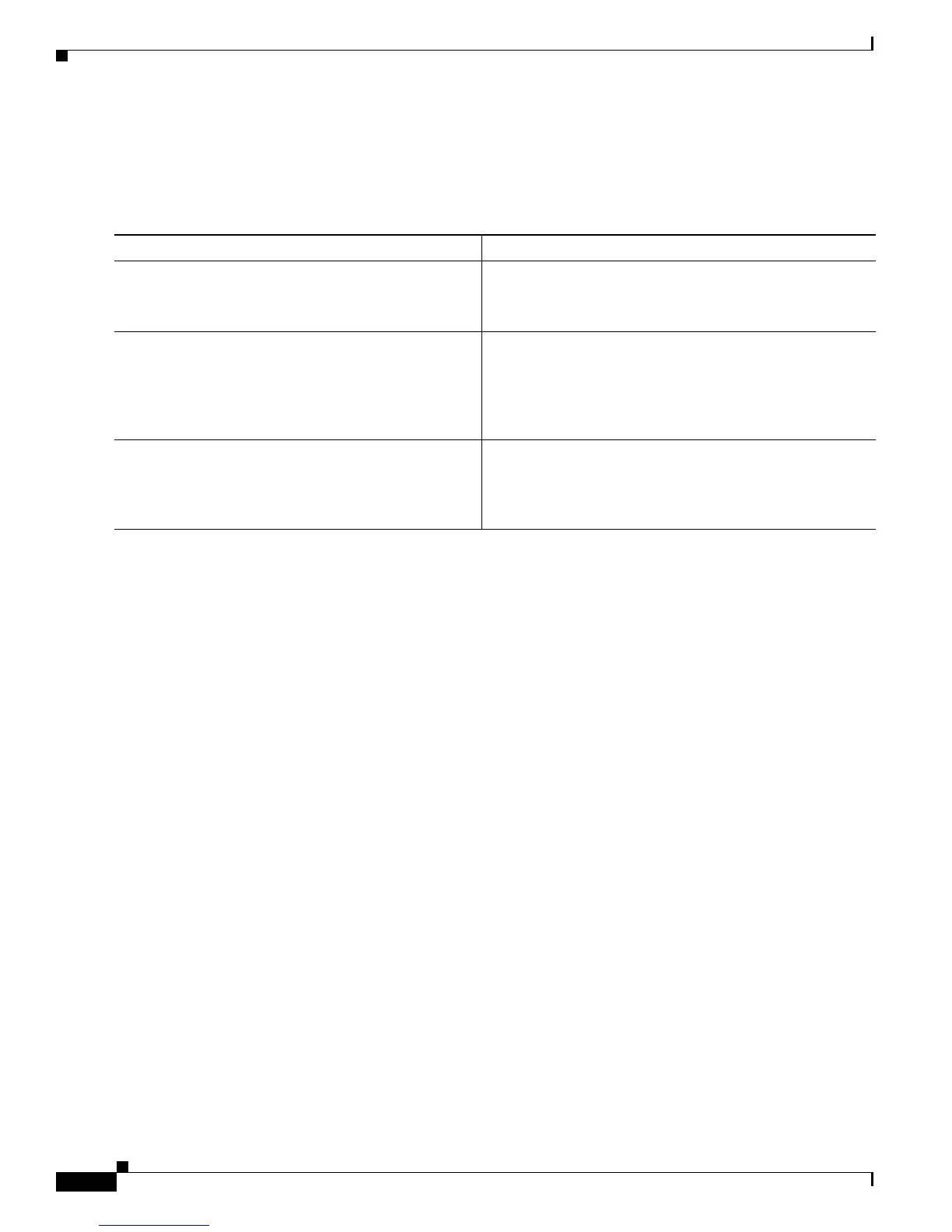6-28
Cisco 10000 Series Router Quality of Service Configuration Guide
OL-7433-09
Chapter 6 Policing Traffic
Configuring Traffic Policing
Configuring Single-Rate Traffic Policing Based on Bits per Second
To configure traffic policing based on bits per second (bps), enter the following commands beginning in
global configuration mode:
Configuration Examples for Configuring Single-Rate Traffic Policing Based on Bits per Second
This section provides the following configuration examples:
• Configuration Example for Configuring a Single Policing Rate and Burst Sizes, page 6-28
• Configuration Example for Configuring Single-Rate Two-Color Policing, page 6-29
• Configuration Example for Configuring Single-Rate Three-Color Policing, page 6-29
• Configuration Example for Policing a Priority Service, page 6-30
• Configuration Example for Configuring Single-Rate Policing in a Hierarchical Policy, page 6-30
• Configuration Example for Policing PPPoE over ATM Sessions, page 6-31
Configuration Example for Configuring a Single Policing Rate and Burst Sizes
Example 6-3 shows how to configure a policing rate for the class named group1 in the policy map named
police. In the example, the router polices group1 traffic at 8000 bits per second and allows committed
bursts of 2000 bytes and excess bursts of 4000 bytes.
Example 6-3 Configuring a Policing Rate Based on Bits per Second
Router(config)# class-map group1
Router(config-cmap)# match access-group 2
Router(config-cmap)# exit
Router(config)# policy-map police
Router(config-pmap)# class group1
Router(config-pmap-c)# police 8000 2000 4000
Router(config-pmap-c)# exit
Router(config-pmap)# exit
Router(config)# interface atm 1/0/0.1 point-to-point
Router(config-subif)# service-policy input police
Command Purpose
Step 1
Router(config)# policy-map policy-map-name
Specifies the name of the policy map and enters policy-map
configuration mode.
policy-map-name is the name of the policy map.
Step 2
Router(config-pmap)# class class-map-name
Assigns the traffic class you specify to the policy map.
Enters policy-map class configuration mode.
class-map-name is the name of a previously configured
class map and is the traffic class for which you want to
define QoS actions.
Step 3
Router(config-pmap-c)# police [cir] bps
[bc]
burst-normal [pir pir] [be] burst-excess
[conform-action action] [exceed-action action]
[violate-action action]
Configures bits per second-based traffic policing.
For more information, see the “police Command
(Single-Rate)” section on page 6-6 or the “police Command
(Two-Rate)” section on page 6-9.

